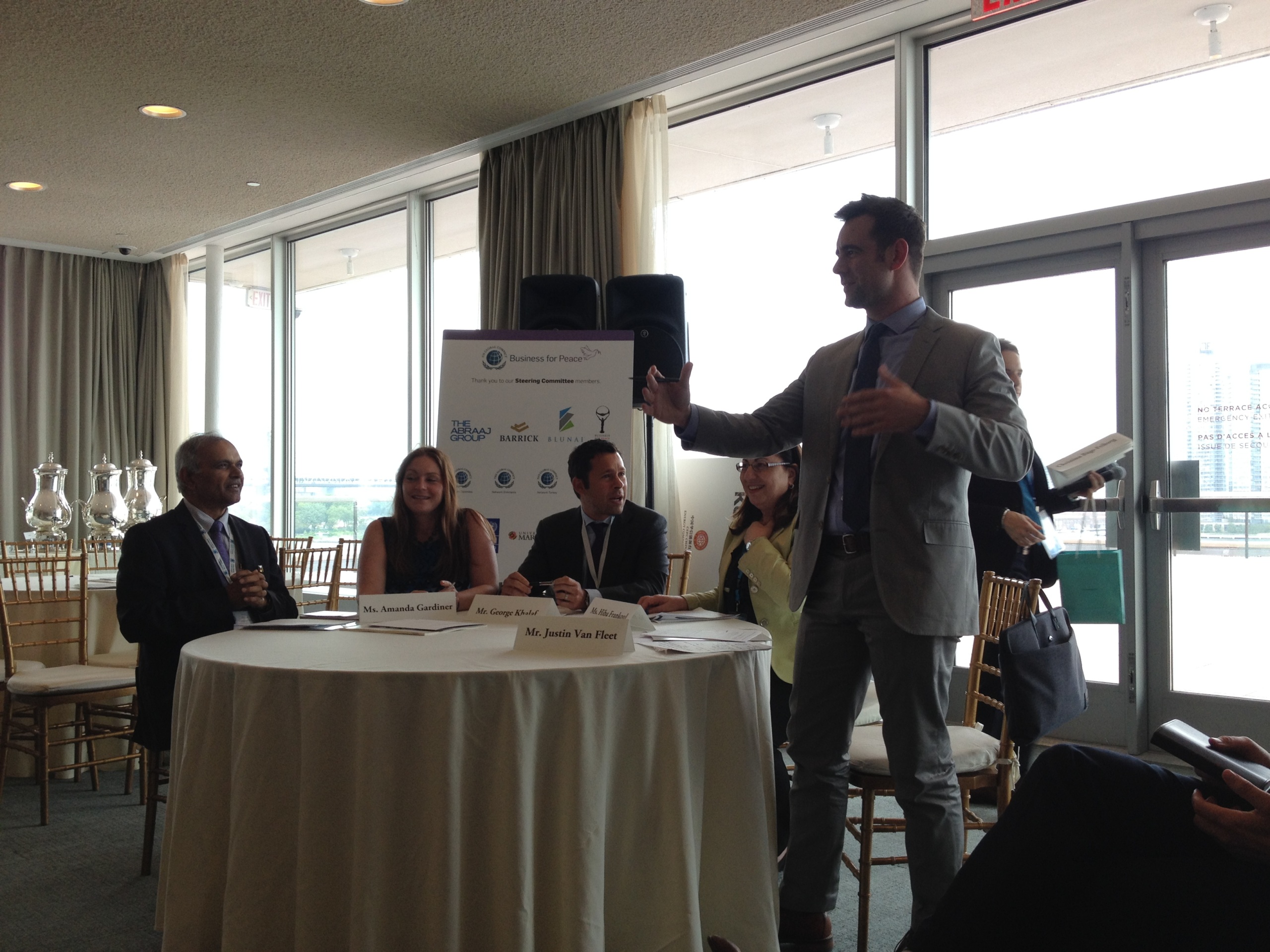Inside the Global Compact’s 15th Anniversary: Lessons Learned

Photos by GBC-Education.
Fifteen years ago, the first companies of today’s band of 8,320 signed onto a set of ten principles which transformed the way they did business. The United Nations Global Compact’s Principles prioritize basic human rights above all else so that companies who commit to them vow to not only rise above corruption, but to take action against it as well.
Originally set in place to steer the private sector’s role in achieving the UN Millennium Development Goals (MDGs) by 2015, the Global Compact’s GC+15 event aims to unite business leaders with high-level political figures to end global corruption. For three days, private sector leaders will gather at the United Nations New York City headquarters for the fifteenth anniversary of the Global Compact, although the first two days are dedicated to developing the Global Compact’s Business for Peace platform. The MDGs are set to expire in a matter of months and many of them — including providing the remaining 58 million children out of school access to primary school education — are far from being met. In just three months, world leaders will gather again at the same location to decide the necessary next steps to see a new set of goals and targets to fruition by 2030. Already, there is consensus on a new vision for education, and discussions around its components — including establishing an emergency education financing mechanism — are still being discussed. Talks of the goals’ implementation at the Global Compact’s 15th Anniversary will propel the discussion forward at the upcoming Oslo Summit on Education for Development and Financing for Development Conference in Addis Ababa, in the lead up to September’s United Nations General Assembly.
To further engage corporate attendees in the post-2015 dialogue, the team behind the Global Compact set aside the first two days of the event for specialized working groups and focused meetings. Then, on the morning of the third and final day, all participants will assemble to draw conclusions and forge new pathways to partnerships. Read on to join some of the discussions from the first day of this year’s event:
Justin van Fleet, GBC-Education Advisory Board member, moderated a panel on children’s education and youth employment in high-risk areas.
He called on business leaders to support a funding mechanism to promote education as a protective structure for children during emergency crises. Half of the 58 million primary school-aged out-of-school children live in conflict-affected areas such as Syria and Pakistan. In these high-risk situations, children tend to drop out of school and are more vulnerable to child labor and early marriage — all which only perpetuate the cycle of poverty that often leads to conflicts in the first place.
Hiba Frankoul, UNICEF’s Partnerships Manager, stressed that conflict and emergency situations are protracted and are far from going away.
“Everyone has a contribution to make,” she said. “All stakeholders can bring something to the table, regardless of government responsibility.” When the formal education structure is affected in emergency, she recommends that businesses can help reach the “hardest to reach” by engaging in one of the following three activities.
Strategic response: Companies shouldn’t funnel all their investments to present emergencies, but should invest in education structures that will prepare for them or the long term sustainability.
Partnerships: Companies should partner with those in the industry setting to max out insider expertise and reduce investment risk.
Innovative solutions: Companies should leverage technology, scale up channels and deliver solutions which are their forte.
Anil Sachan, Executive Director of the Oil and Natural Gas Corporation Limited, also stressed that, profitability should not be only end goal for corporations.
“We need to spend money for [social goods],” Anil said. “There is no other short cut.”
Amanda Gardiner, Vice President of Sustainability and Social Innovation from GBC-Education member Pearson, stressed the power of strategizing partnerships.
“We must articulate our values for how we want to change the world.” Partnerships for education, she noted, are the largest enabler for all of the goals in the post-2015 development agenda.
The consequences of businesses not engaging in the global dialogue on education was also raised.
“The Middle East has the highest unemployment in the world,” said George Khalad, the Director of the Middle East and North Africa regions of the nonprofit Synergos Institute. “In twenty years, we will need 100 million new jobs just to absorb the growing workforce.” The highest yield derived from public-private partnerships, he said, wasn’t necessarily in the product itself, but in its structure’s adaptability. “Most importantly, we can help [companies] scale up [their social solutions]. This includes replication, not just scaling up the original product.” For example, by taking the original model to an organization with a wider reach, Synergos extended the reach of one of their entrepreneur’s products that aids visually impaired individuals by facilitating a partnership with Palestinian department of ministry.

